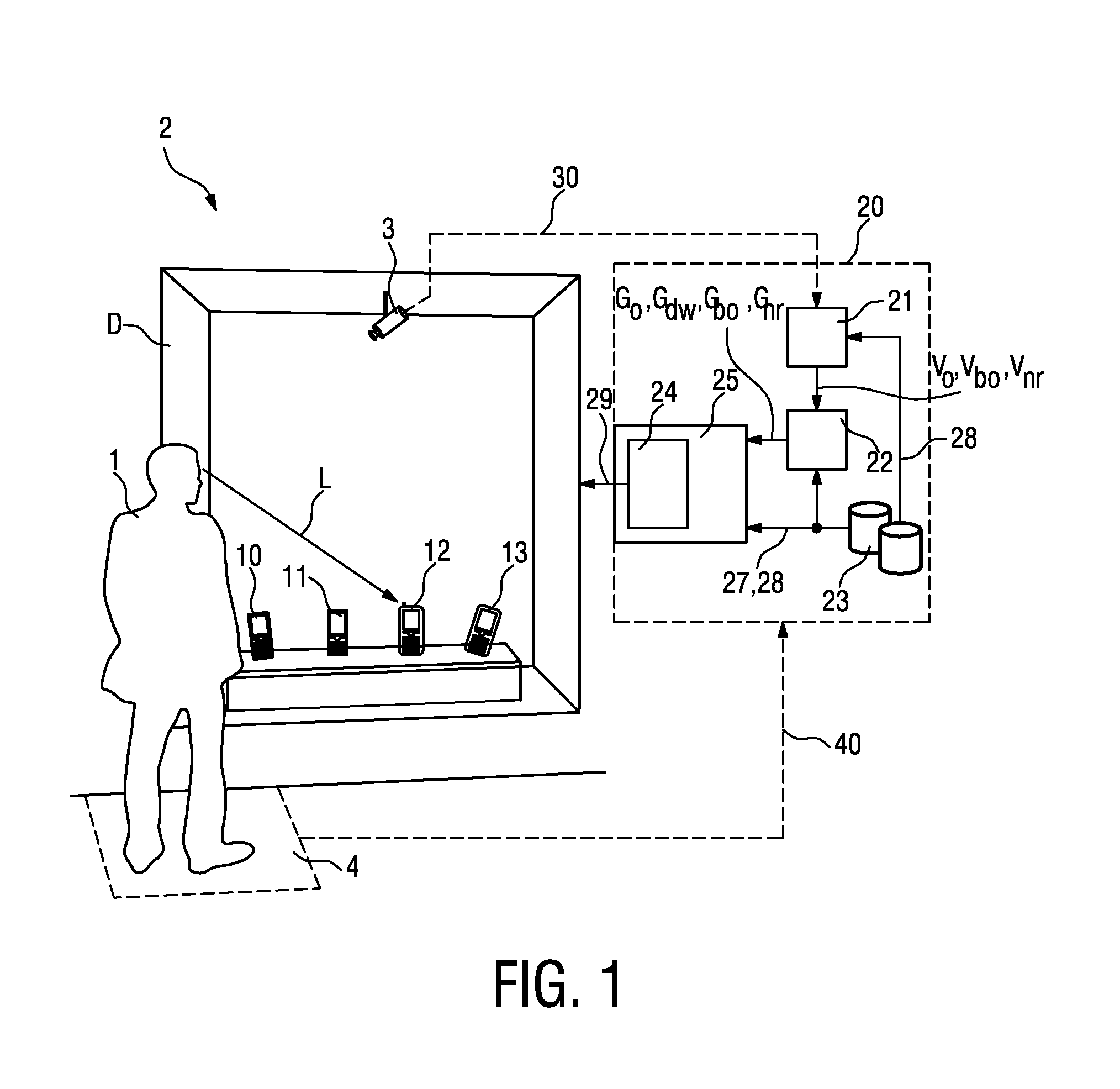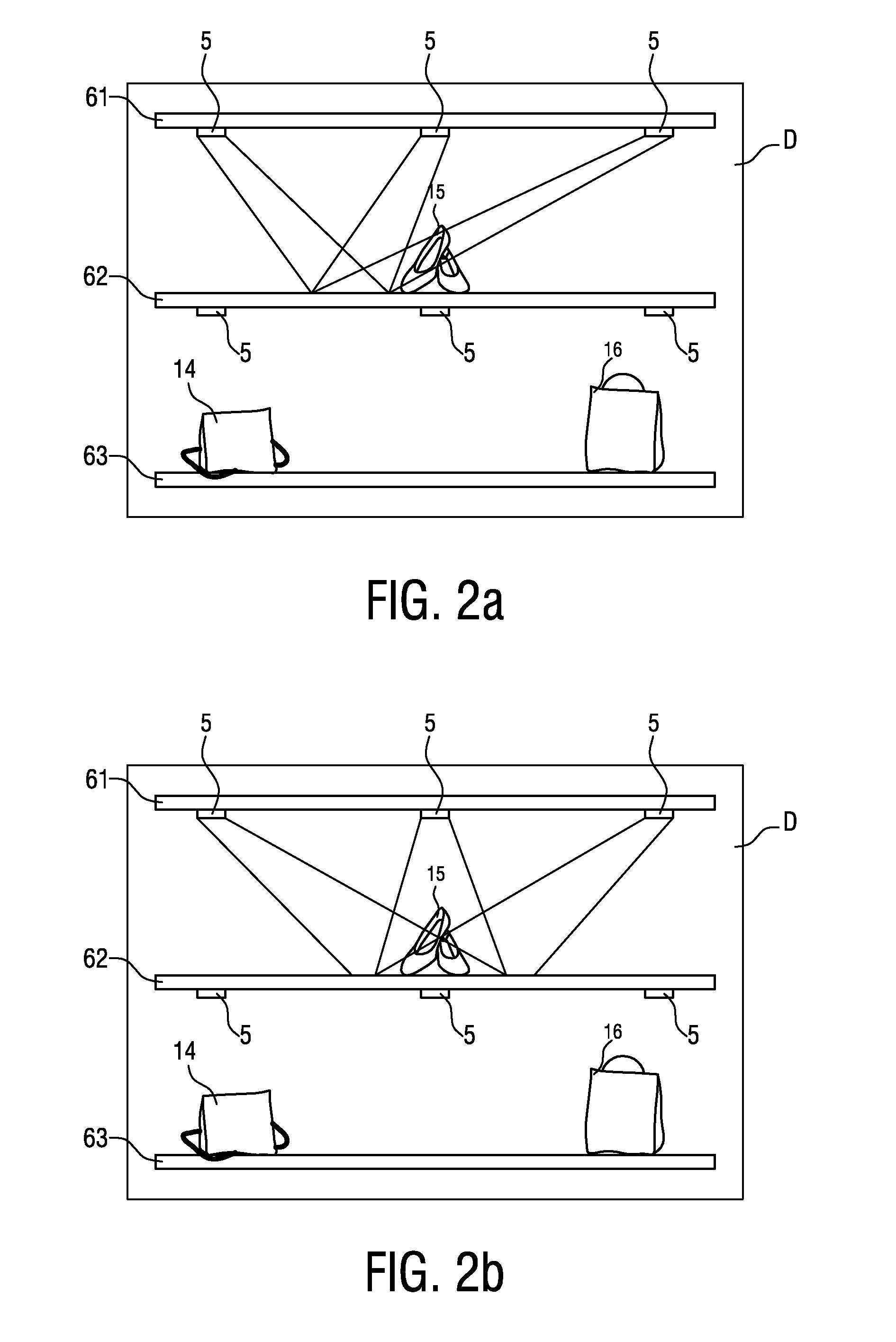Method of performing a gaze-based interaction between a user and an interactive display system
a technology of interactive display system and user, applied in the field of gaze-based interaction between a user and an interactive display system, can solve the problems of system failure, poor accuracy of user's gaze detection, and state of the art gaze tracking that cannot deliver a highly robust detection of user input, etc., to achieve simple and effective manner, accurate highlight an object in the presentation area, and economic
- Summary
- Abstract
- Description
- Claims
- Application Information
AI Technical Summary
Benefits of technology
Problems solved by technology
Method used
Image
Examples
Embodiment Construction
[0042]FIG. 1 shows a user 1 in front of a display area D, in this case a potential customer 1 in front of a shop window D. For the sake of clarity, this schematic representation has been kept very simple. In the shop window D, items 10, 11, 12, 13 are arranged for display, in this example different mobile telephones 10, 11, 12, 13. A detection means 4, in this case a pressure mat 4, is located at a suitable position in front of the shop window D so that the presence of a potential customer 1 who pauses in front of the shop window D can be detected. A head tracking means 3 with a camera arrangement is positioned in the display area D such that the head motion of the user 1 can be tracked as the user 1 looks into the display area D. The head tracking means 3 can be activated in response to a signal 40 from the detection means 4 delivered to a control unit 20. Evidently, such a detection means 4 is not necessarily required, since the observation means 3 could also be used to detect the...
PUM
 Login to View More
Login to View More Abstract
Description
Claims
Application Information
 Login to View More
Login to View More - R&D
- Intellectual Property
- Life Sciences
- Materials
- Tech Scout
- Unparalleled Data Quality
- Higher Quality Content
- 60% Fewer Hallucinations
Browse by: Latest US Patents, China's latest patents, Technical Efficacy Thesaurus, Application Domain, Technology Topic, Popular Technical Reports.
© 2025 PatSnap. All rights reserved.Legal|Privacy policy|Modern Slavery Act Transparency Statement|Sitemap|About US| Contact US: help@patsnap.com



